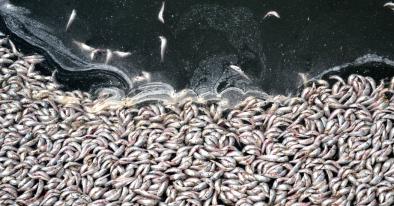Improved estimates of ocean heat content from 1960 to 2015
The ocean is the memory of all of the past climate change
Kevin Trenberth, study co-author and senior scientist at the National Center for Atmospheric Research
- Suggests that since 1960, a staggering 337 zetajoules of energy — that’s 337 followed by 21 zeros — has been added to the ocean in the form of heat. And most of it has occurred since 1980.
- Provides updated ocean heat content (OHC) estimates with the goal of minimizing associated sampling error
- Performs a subsample test, in which subsets of data during the data-rich Argo era are colocated with locations of earlier ocean observations, to quantify this error
- Results provide a new OHC estimate with an unbiased mean sampling error and with variability on decadal and multidecadal time scales (signal) that can be reliably distinguished from sampling error (noise) with signal-to-noise ratios higher than 3
- Finds that the inferred integrated Earth energy imbalance (EEI) is greater than that reported in previous assessments and is consistent with a reconstruction of the radiative imbalance at the top of atmosphere starting in 1985
- Finds that changes in OHC are relatively small before about 1980; since then, OHC has increased fairly steadily and, since 1990, has increasingly involved deeper layers of the ocean
- Finds that OHC changes in six major oceans are reliable on decadal time scales
- Finds that all ocean basins examined have experienced significant warming since 1998, with the greatest warming in the southern oceans, the tropical/subtropical Pacific Ocean, and the tropical/subtropical Atlantic Ocean
Specific numbers are as follows:
"On the basis of reconstructed temperature fields and associated error bars, monthly OHC changes within 0 to 700 and 700 to 2000 m show significant warming in the past 56 years. A stronger ocean warming trend has existed since the late 1980s for both 0- to 700- and 700- to 2000-m depths compared with the 1960s to the 1980s. The linear trend of OHC at 0- to 700-m depth is 0.15 ± 0.08 × 1022 J/year (0.09 ± 0.05 W/m2) during 1960–1991 and 0.61 ± 0.04 × 1022 J/year (0.38 ± 0.03 W/m2) during 1992–2015, a warming trend four times stronger than the 1960–1991 period. The linear trend of OHC at 700- to 2000-m depth is 0.04 ± 0.08 × 1022 J/year (0.02 ± 0.05 W/m2) in the period 1960–1991 and 0.37 ± 0.02 × 1022 J/year (0.23 ± 0.02 W/m2) from 1992 to 2015 (nine times stronger than that from 1960–1991). This indicates an accelerating heat input into both the 0- to 700-m and 700- to 2000-m layers. The acceleration is most probably linked to the increasing EEI with time. In particular, a new study shows that the recent acceleration is partly due to recovery from the volcanic eruption in 1992 (Mt. Pinatubo), which led to strong ocean cooling."
Related Content



